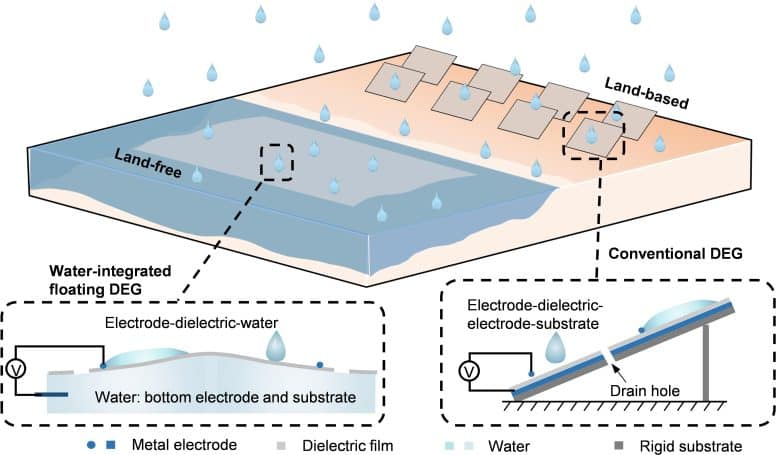
Researchers develop a device that floats on water and converts raindrops into electricity at a lower cost.

Conventional droplet electricity generators use a solid base and a metal electrode beneath a dielectric film. When raindrops strike the film, they generate voltage through contact electrification. However, these systems rely on rigid and often expensive materials, making them difficult to deploy at scale.
Scientists at the Nanjing University of Aeronautics and Astronautics have developes a floating droplet electricity generator. The new device replaces the solid base with water itself, allowing the system to float and operate directly on lakes or other natural surfaces.
In this design, the water serves both as physical support and as a conductive electrode, reducing material weight by approximately 80 per cent and cost by around half compared to conventional setups.
When a raindrop hits the floating dielectric layer, water’s incompressibility and surface tension provide stability, allowing the droplet to spread efficiently. Ions in the water act as charge carriers, enabling voltages of about 250 volts per droplet, similar to traditional solid-based systems.
The researchers have tested the generator under varied environmental conditions, including changes in temperature, salt levels, and natural water exposure. Performance remained consistent due to the chemical stability of the dielectric layer and the self-draining structure that prevents excess water accumulation.
To test scalability, the team built a 0.3-square-metre prototype that powered 50 LEDs and charged capacitors within minutes. The researchers suggest that future systems could be deployed over lakes, reservoirs, or coastal areas to produce electricity without occupying land.
The technology may also support floating sensors for water quality or environmental monitoring, expanding renewable energy applications in aquatic environments. This device, described in National Science Review, aims to make raindrop-based power generation lighter, cheaper, and easier to scale than existing designs.







